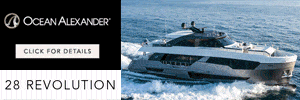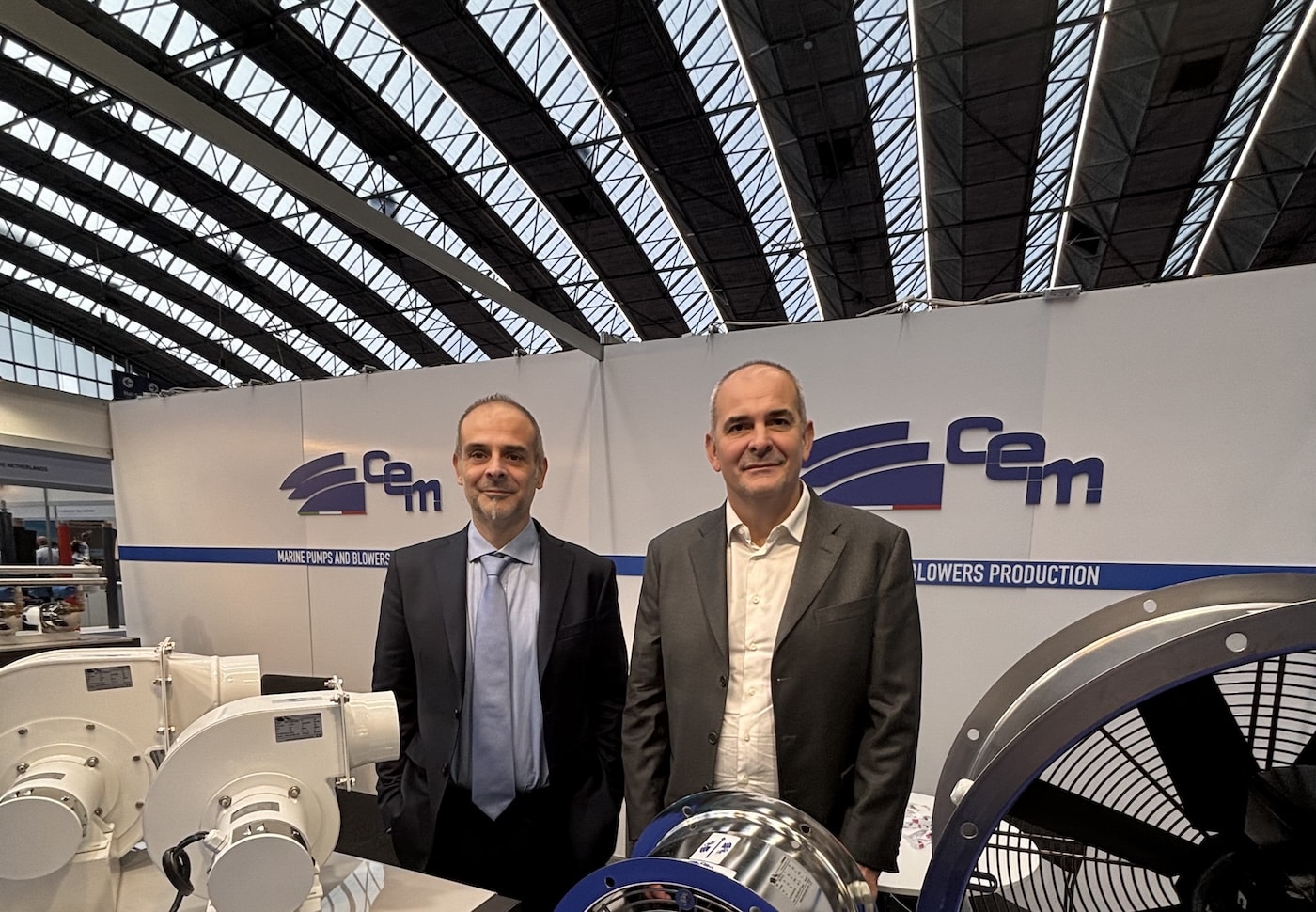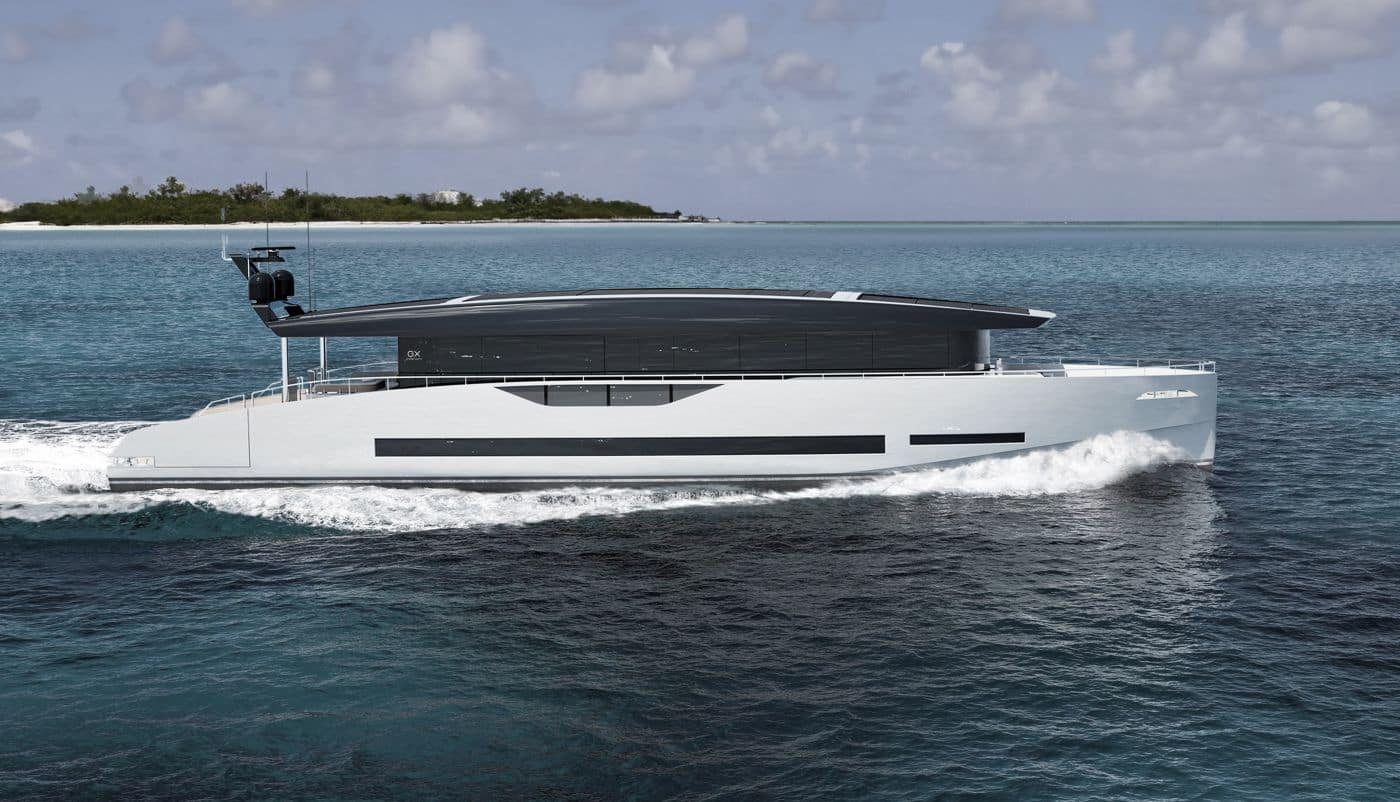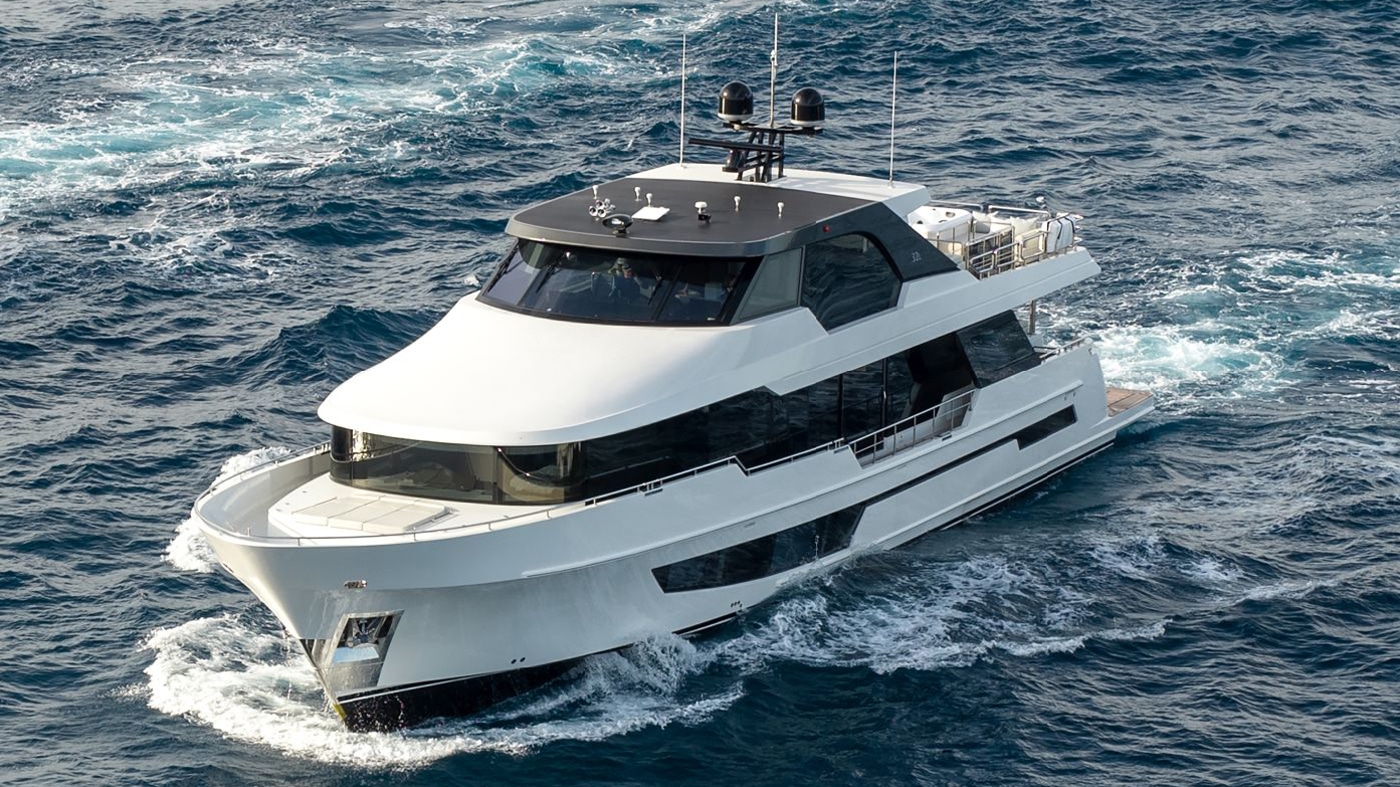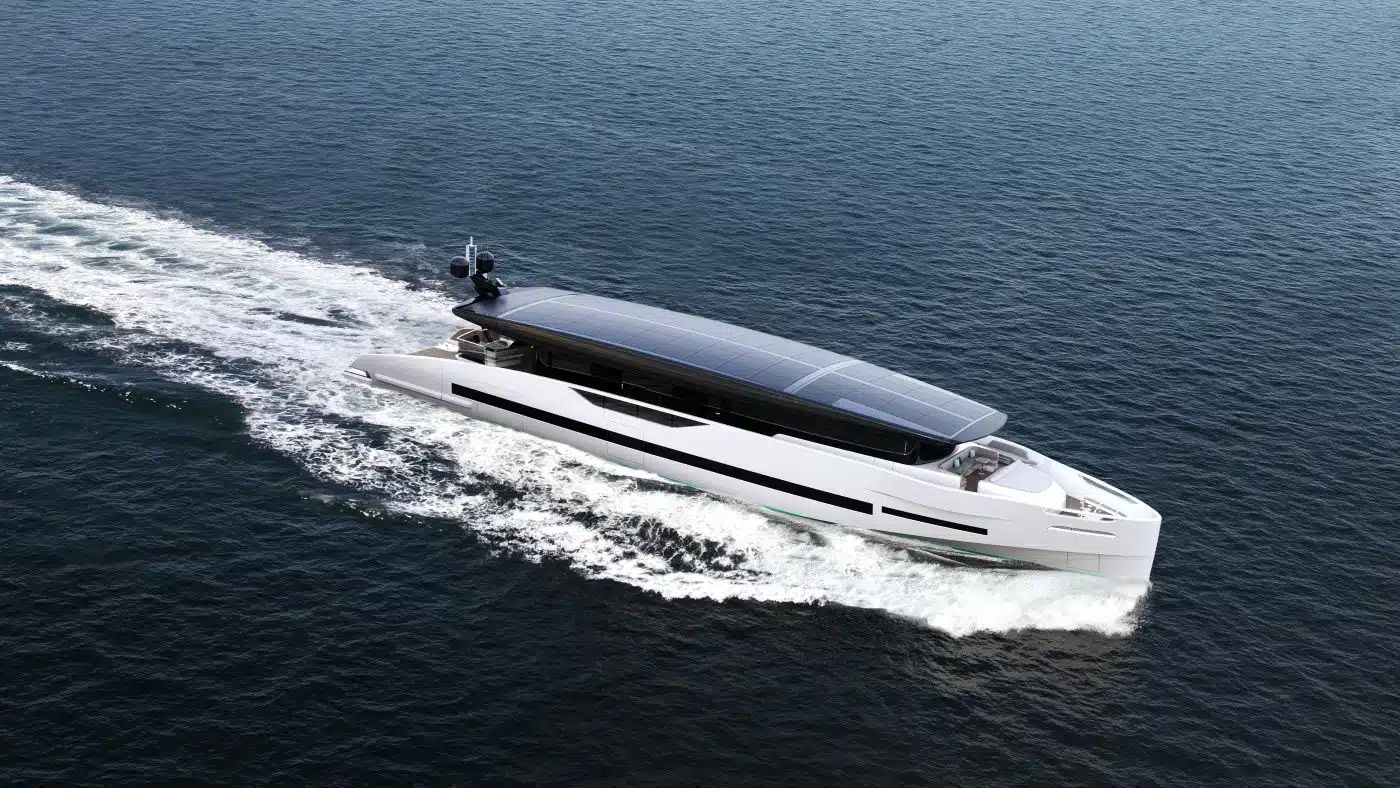There has never been a more alluring time to enjoy extended and far-reaching adventures in the comfort and privacy of a luxury yacht. Which is why, fresh from celebrating another industry award for its achievements, London-based studio Vitruvius Yachts is in the perfect position to design superyachts for those with a wanderlust for oceanic exploration.
A decade has passed since Vitruvius’s maiden project, 49.9m Exuma, rocked the world’s preconceptions of what an Explorer yacht could be and look like. Since that time, the studio has swiftly shaped a legacy for itself that not only spans the full spectrum of motor yachts, but challenges the whole industry to embrace the emerging requirements of owners when it comes to the versatility of their yachts.
Although Vitruvius Yachts might be a relative newcomer to the scene, the studio’s creative compass is steadfastly directed by world-renowned naval architect and designer Philippe Briand, who has over four decades of pedigree design experience, dozens of industry awards and more than 12,000 vessels to his name. Under the Vitruvius banner, Briand has developed a instantly recognizable aesthetic that is efficient, practical and beautiful, covering the full spectrum of motor yachts from conventional Lifestyle cruisers to exceptionally adventurous Expedition vessels.
Below, Briand reflects on what he has learned from the past 10 years of designing some the world’s most adventurous motor yachts, and what the future holds for the market.
 ” We have historically split the yachting market into an oversimplified, condensed range of categories for owners. In order to design the best yachts for our clients, we need to understand what they want to do with them, and appreciate that this might change throughout their ownership journey.
” We have historically split the yachting market into an oversimplified, condensed range of categories for owners. In order to design the best yachts for our clients, we need to understand what they want to do with them, and appreciate that this might change throughout their ownership journey.
In the luxury car industry, there are approximately 10 different categories for buyers to choose from, ranging from sporty Ferraris to sumptuous Bentleys to robust 4×4 Range Rovers, with intermediate categories like SUVs in between. By subdividing the market into these niches, the car industry has been able to expand the market by identifying clients more precisely; this is something we need to do in yachting.
At Vitruvius Yachts, we believe that the motor yacht market fits onto a spectrum with three major categories: Lifestyle yachts sit at one end, highly autonomous and specialized Expedition yachts are at the other, and versatile Explorer yachts sit somewhere in between the two, depending on their owners’ requirements for equipment. Naturally, all the yachts, whatever their category definition, need to be comfortable, seaworthy and efficient.
LIFESTYLE YACHTS
Najiba (58m) & Nautilus (previously Grace E, 73m)
To be a gamechanger in the Lifestyle yacht category, which is by far the most prolific, you need to find ways to improve efficiency and provide a lifestyle suited to young-minded owners.
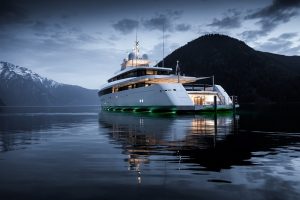
Lifestyle yachts make up around 90% of the market today. When it comes to designing these ‘Superyachts’, like those Vitruvius Yachts usually see cruising in the warm climates of the Mediterranean and Caribbean, to stand out you need to be able to tailor the offering to owners’ lifestyles and preferences, with the utmost level of comfort.
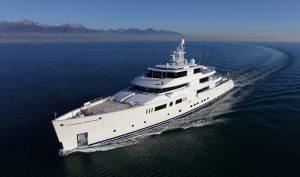
Vitruvius yachts Najiba and Nautilus are great examples of this. They provided their owners with wellness facilities, vast amounts of outdoor space, superb views throughout their interiors thanks to large amounts of glass, and all the desirable water sports toys and technologies to entertain the family. By offering welcoming exterior spaces closer to the water’s edge, we allowed the owners and guests to feel more connected to the sea rather than being isolated in highly elevated superstructures. These allowed for easy communication and flow between the various areas, including an inviting terrace at the waterline. These are all integral to the lifestyle that owners expect to enjoy on yachts of this kind today, and they need to be considered from the very start of a design project.
EXPLORER YACHTS
Exuma (45m) & Galileo G (55m)
Exploring the world brings you a richness in knowledge and culture. Explorer yachts – which are capable of visiting more remote waters – need to be even more seaworthy and practical than Lifestyle yachts, with a wider range of autonomy.
It is our job as a designer or naval architect to improve or refine these qualities, bringing our knowledge of hydrodynamics and engineering to create a yacht that complies with the owner’s intended cruising programmes. Vitruvius yachts also need to take into account additional stowage requirements within the hull for large, specialist equipment such as submersibles or land vehicles. This thinking led to the concepts of Vitruvius’s earliest projects, Exuma and Galileo G.
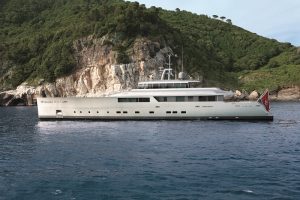
When Exuma was delivered in 2010, she was a completely unique offering. Everything that came before her was more like a trawler, a type of yacht that was a fixture in the market for a long time. Trawlers have a long range of autonomy but they are usually quite small – within the 20-30m range – and are not generally comfortable or modern enough by today’s yachting standards, particularly in regards to the space provided for accommodation.
It is safe to say that the solution we came up with was an Explorer yacht that positively encouraged a desire to cruise as much as possible. Since her delivery, Exuma has logged more than 100,000nm, which is more than two complete circumnavigations and quite exceptional for a pleasure yacht; her owner counts his visits to remote islands in the Pacific Ocean as one of the best experiences he has ever had. Galileo G has also travelled extensively, including to the high latitudes, taking in Antarctica and the North West Passage.
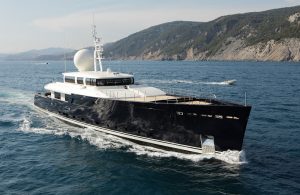
They say that imitation is the sincerest form of flattery, and we feel heartened that there has been a growing trend in the use of many design features and capabilities that first appeared on our Explorer yacht Exuma, including the plumb line bow. Of course, before Exuma there were luxury yachts that travelled the world extensively, such as Octopus, but their scale needed to be much, much larger to achieve the kind of autonomy required for a global cruising programme with this degree of comfort and lifestyle onboard.
EXPEDITION YACHTS
Vitruvius No. 8 (55m)
An Expedition yacht is distinguished from an Explorer yacht in that it needs to have very specific qualities and capabilities for a particular purpose or goal, with corresponding tools, tenders or equipment on deck.
The purpose of the vessel is usually to take the owner to a particular spot or to carry out a specific activity – the destination being more important than the act of travelling itself – and once the vessel is onsite, they can then execute the purpose. The entire design concept therefore revolves around these highly specialised owner requirements. It is not unlike the approach for creating a scientific research vessel – much like those adapted and used by Jean Cousteau, in his time – except with a much higher level of comfort and detail.
For our Vitruvius Yachts No. 8 Expedition yacht, which is currently in build at Feadship in the Netherlands, all our design work stemmed from the owner’s requirement to have a 6.3-tonne, three-person submersible onboard, launched and retrieved by a hefty eight-tonne Palfinger knuckle-boom crane. The yacht’s open aft deck needed to house the submersible and crane, as well as a Toyota Land Cruiser and two tenders, including a 5.6-metre multipurpose tender and an 8.0-metre limousine. All this had to fit on the rear exterior deck of a 55-metre yacht, while still providing ample luxury guest space inside to enjoy the degree of comfort you would expect on a superyacht, including a large owner’s suite and four further guest cabins alongside accommodation for 15 crew. The owner wants to experience the kind of comfort we see on traditional superyachts, so we effectively needed to fit the interior real estate of what would be expected on a 55-metre luxury Lifestyle vessel into half of the yacht.
It was an unprecedented challenge, which we thoroughly enjoyed tackling. Making a departure from our usual low-profile yacht design style, we introduced a fourth deck in the forward part of the yacht in order to provide a large owner’s suite on the upper deck forward without sacrificing other guest areas. The owner of this yacht gets the best of both worlds: he is free to use the yacht both as an Expedition yacht and a Lifestyle yacht, with comfort and luxury matching capability and robustness.
We are in exciting new territory when it comes to offering truly ‘luxury’ level Expedition yachts of this kind. There almost always has to be a trade-off in volume for luxury spaces when you want more functionality, more equipment like SUVs and submersibles, and more opportunity to explore the world. But less volume does not have to mean that the yacht is less functional or comfortable, and it is down to the designer’s skill to optimize the yacht’s potential. As long as the client understands the realities of the trade-offs, they can gain so much more in terms of the experiences they have with their yacht.
ADVENTUROUS YACHTS FOR A NEW GENERATION
The profile of clients buying Explorer and Expedition yachts is evolving, which is thrilling as a designer. We can offer a modern luxury yachting solution that is not at odds with the values of a newly emerging generation of owners.
In the past, clients for Explorer and Expedition yachts have tended to be more experienced, perhaps having owned several vessels and expressing more interest in specific design details and technical performance. But I believe that Explorer and Expedition yachts are becoming less niche, and more first-time buyers will be starting their ownership journeys with them in the near future. It has been reported that the Explorer and Expedition yacht market has experienced a two-digit growth since 2008, and that it currently represents around 10% of the entire superyacht market, which is not far off the proportion of sailing yachts at this size level. I believe it is not a stretch to suggest that clients who in the past would have bought sailing yachts are now transferring their interest to more of an Explorer- or Expedition-type yacht, because, just like a sailing yachts, they are ideal for longer journeys, and they can bring you closer to nature.
These new clients also want to minimise the impact on the environment from their yachting activities by choosing vessels that offer higher efficiency and lower emissions. The greatest influence you can have on the sustainability of a yacht starts with your approach to its naval architecture, through the development of an efficient hull, supported by technologically advanced propulsion systems. Through collaborative efforts initiated by the Water Revolution Foundation, the yachting industry is making great advances in quantifying the relative sustainability of yachts through the creation of the Yacht Environmental Transparency Index (YETI, for short). This allows us to indicate and provide guidance on what constitutes an environmentally responsible yacht in a more precise way.
Although I maintain that the Mediterranean Sea is an exquisite option when it comes to cruising, our oceans have the potential to offer much more. Today’s yachts visit just 3% of the planet’s coastlines; there is still so much left to discover and experience. This can be a point of attraction for both experienced owners who have extensively cruised the typical waters in the Mediterranean and Caribbean, as well as newcomers to yachting who have a respect, curiosity and appreciation for the natural wonders of the world. With the technology and design tools at our disposal, we can deliver the experience that these new owners desire without the yacht’s operation being at odds with their environmental sensibilities. “


